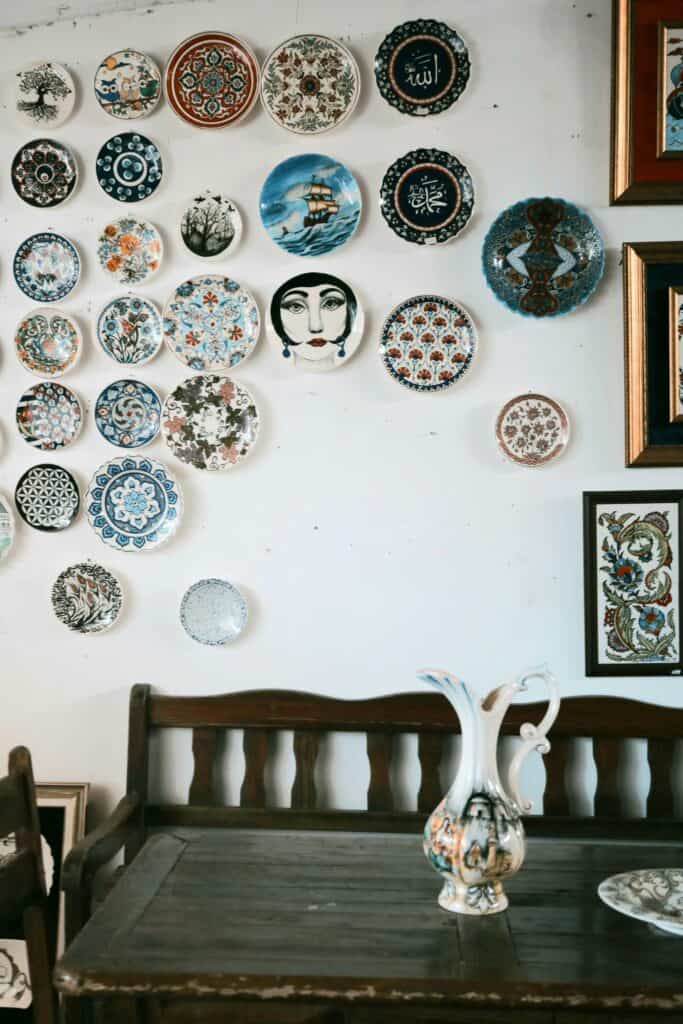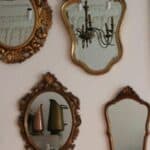Ceramic antiques are a fascinating and diverse area of vintage and antique collecting, encompassing a wide range of objects from various cultures and periods. Whether you're a seasoned collector or just starting out, understanding the history, identifying key characteristics, and knowing how to care for your ceramic pieces are essential skills. At Village Vintage, we’ve written this guide to help you navigate the world of ceramics!
The History of Ceramic Antiques
Early Ceramics
The history of ceramics dates back thousands of years, with some of the earliest known pieces originating in China around 18,000 BCE. These early ceramics were primarily utilitarian objects, such as bowls and storage jars. Over time, the craft evolved, and ceramics began to be used for decorative purposes as well.
Chinese Ceramics
Chinese ceramics hold a special place in the history of pottery. The development of porcelain during the Tang Dynasty (618-907 CE) was a significant milestone. Porcelain, known for its strength and translucence, was exported around the world and quickly became very popular. The Ming Dynasty (1368-1644) further elevated Chinese ceramics, with the famous blue and white porcelain becoming highly sought after.
European Ceramics
European ceramics saw significant advancements during the Renaissance. Italian maiolica, a tin-glazed pottery, became popular in the 15th and 16th centuries. In the 18th century, European porcelain factories such as Meissen in Germany and Sèvres in France began producing high-quality porcelain that rivalled Chinese imports. The invention of bone china in England in the late 18th century then added another dimension to European ceramics.
American Ceramics
In America, ceramic production started to flourish in the 19th century. Factories like Rookwood, Roseville, and Weller became well-known for their art pottery, combining artistic design with functional forms. The Arts and Crafts Movement of the late 19th and early 20th centuries further spurred interest in handcrafted ceramics.
Identifying Ceramic Antiques
Types of Ceramics
Understanding the different types of ceramic antiques is crucial for identification. The main categories include:
- Earthenware: A porous type of pottery that is fired at lower temperatures. It is often glazed to make it watertight.
- Stoneware: Fired at higher temperatures, stoneware is non-porous and more durable than earthenware.
- Porcelain: Known for its translucence and strength, porcelain is fired at very high temperatures.
- Bone China: A type of porcelain that includes bone ash, giving it a unique translucence and whiteness.
Marks and Signatures
Many ceramic pieces have marks or signatures that can help identify their origin, age, and maker. These marks are often found on the bottom of the piece and can include:
- Factory Marks: Indicate the manufacturer. For example, the Meissen factory mark is crossed swords.
- Artist Signatures: Individual artists may sign their work, particularly in art pottery.
- Country of Origin: Pieces intended for export often include the country of origin, such as "Made in China" or "Germany."
Styles and Periods
Recognizing styles and periods can also aid in identification. For example:
- Ming Dynasty Porcelain: Typically features blue and white decoration with intricate patterns.
- Art Nouveau Ceramics: Characterized by organic forms and flowing lines, popular in the late 19th and early 20th centuries.
- Mid-Century Modern: Features clean lines and bold colours, popular in the mid-20th century.
Condition
The condition of a piece significantly affects its value. The Village Vintage team suggest looking for:
- Chips and Cracks: Any damage can reduce value, but some minor wear might be acceptable for very old pieces.
- Restoration: Professional restoration can preserve a piece, but amateur repairs might detract from its value.
- Glaze: Check for crazing (fine cracks in the glaze) and discoloration, which can indicate age and authenticity.
Caring for Ceramic Antiques
Proper care is essential to preserve the beauty and value of ceramic antiques:
Cleaning
- Gentle Cleaning: Use a soft cloth and mild soap. Avoid abrasive materials that can scratch the surface.
- Avoid Water Immersion: Submerging ceramics in water can cause damage, especially to older pieces with porous bodies.
- Dust Regularly: Use a delicate soft brush or cloth to remove dust.
Display
- Avoid Direct Sunlight: Prolonged exposure to sunlight can cause fading and damage to glazes and colours.
- Temperature and Humidity: Keep ceramics in a stable environment to avoid thermal shock and moisture damage.
- Use Gloves: Wearing gloves can prevent oils from your skin from transferring to the ceramic surface
Repair and Restoration
- Professional Restoration: If a piece is damaged, seek a professional restorer to handle repairs.
- Avoid Amateur Repairs: DIY repairs can often cause more harm than good and can devalue the piece.
Should you need advice when it comes to antique restoration, our team are more than happy to provide our expertise.
Our Ceramic Antiques
At Village Vintage, we have a beautiful selection of ceramic antiques available. From vases, to jugs, dishes and mugs, our wonderful collection has something for every taste and can be viewed here.
If you’d like to view an item before you buy, we offer viewings at our secure storage facility, Monday-Friday by appointment only. Located on the Essex and Suffolk border, our team will meet you and offer their expertise, so that you’re able to purchase with confidence.
Additionally, our customers are welcome to collect items in person, or we can organise both UK and international delivery.
Get in Touch
We hope our ceramic antiques has given you a good insight into what to look out for and what to consider before and after making your purchase. At Village Vintage, we’re passionate about delivering the best results for our valued customers, so if you’re thinking of investing in some vintage or antique items for the home, we’d love to help!
Simply get in touch with us by filling out our contact form and one of our friendly team will get back to you.






